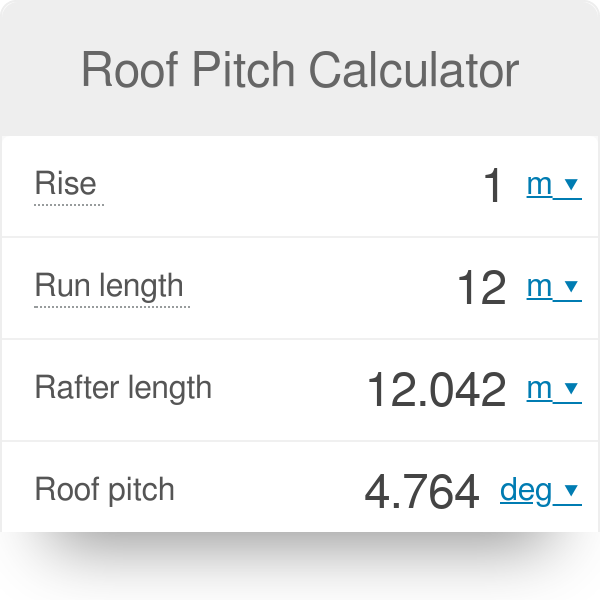For roof slopes expressed as x in 12 rise in run the roof pitch multiplier is determined by finding the square root of rise run 1.
Roof pitch factor multiplier.
This roof pitch chart will give you your multiplier.
Simply locate a roof rafter board place the end of the level against the bottom edge and measure from the 12 inch mark vertically to the bottom edge of the rafter.
So the actual roof surface if it were laid down flat on the ground would be 1 118 times larger than the footprint of the roof.
A 10 slope roof should not be confused with a 10 pitch roof as a 10 slope roof means that the roof rises by ten inches for every foot of run.
The roof slope factor chart also consists of conversion factors to determine the slope of the roof.
For example if you measure 4 inches the pitch of your roof is 4 12.
If you know the pitch of a roof you can use the numbers in the following pitch table to do the following.
Take the area of the roof s footprint say it s 5 000 square feet and multiply 5 000 by 1 118.
That gives you 5 590 square feet which is the actual area of the surface of the roof.
The roof pitch conversion factor is a number that when multiplied by the area covered by the roof gives an estimate the total surface area of the sloped roof itself.
If the home measures 20 x 40 and has a 7 12 roof then to calculate the slope of the roof follow these steps.
And for a roof with a slope of 6 12 that number 1 118 is your roof slope multiplier.
It is sometimes called the roof pitch multiplier.
This will give you the rise over run or pitch.
2280 1900 380 feet added for pitch.
A roof pitch multiplier also called a roof pitch factor is a number that is multiplied by the area covered by a sloped roof to produce the area of the actual surface of the roof.
Determine how many square feet of roof area a building has by measuring from the ground.
Determine how many square feet of roof area a building has by measuring blueprints or plans.

